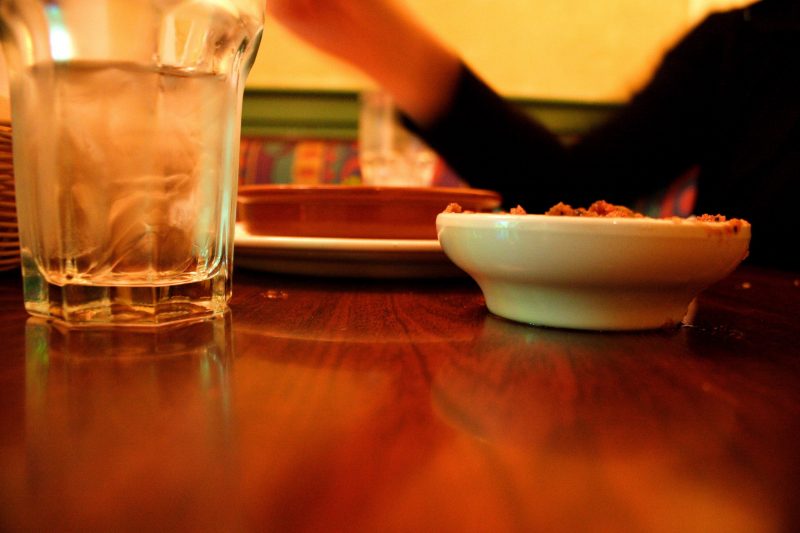The Right Iron Levels In Food
Iron is a vital mineral that plays an essential role in numerous bodily functions, particularly in the formation of hemoglobin, the protein in red blood cells responsible for transporting oxygen throughout the body. Maintaining optimal iron levels in food is crucial for overall health, energy production, and immune function. In this comprehensive guide, we will explore the significance of iron, the different types of iron found in food, key dietary sources, factors affecting absorption, and practical strategies for enhancing your iron intake.
Importance of iron levels in food
Iron levels in food is an indispensable factor, essential for various physiological processes, including:
1) Oxygen transport: Iron is a critical component of hemoglobin, which binds to oxygen in the lungs and delivers it to tissues and organs. Sufficient iron levels are necessary for optimal oxygen transport, which directly influences energy levels and overall vitality.
2) Energy metabolism: Iron is involved in the production of adenosine triphosphate (ATP), the energy currency of cells. Low iron levels can lead to fatigue and decreased physical performance.
3) Immune function: Iron supports the immune system by aiding in the production of immune cells. Adequate iron levels enhance the body’s ability to fight infections and maintain overall health.
4) Cognitive function: Iron is essential for brain health, influencing cognitive abilities and emotional well-being. Insufficient iron levels can lead to difficulties in concentration, memory problems, and mood disturbances.
Types of iron in food
Iron exists in two primary forms: heme iron and non-heme iron. Understanding these forms is crucial for making informed dietary choices.
Heme iron
Heme iron is found in animal products and is more easily absorbed by the body compared to non-heme iron. Major sources of heme iron include:
-
-
- Red meat: Beef, lamb, and pork are excellent sources of heme iron.
- Poultry: Chicken and turkey provide substantial amounts of heme iron.
- Fish and seafood: Fish such as salmon, tuna, and shellfish are rich in heme iron.
-
Non-heme iron
Non-heme iron is primarily found in plant-based foods and is less efficiently absorbed by the body. Key sources of non-heme iron include:
-
-
- Legumes: Lentils, chickpeas, and beans are excellent options for vegetarians and vegans.
- Dark leafy greens: Spinach, kale, and Swiss chard are rich in non-heme iron.
- Nuts and seeds: Pumpkin seeds, almonds, and cashews are good snack choices.
- Fortified foods: Many cereals, breads, and plant-based milk products are fortified with iron.
-
Key dietary sources of iron
Incorporating a variety of iron-rich foods into your diet is essential for maintaining optimal iron levels. Here are some key dietary sources to consider:
Animal sources
1) Red meat: Beef and lamb are among the richest sources of heme iron, making them an excellent choice for those looking to boost their iron intake. A 3-ounce serving of cooked beef can provide around 2.1 to 3.0 mg of heme iron.
2) Poultry: Chicken and turkey are good sources of heme iron, with darker meats providing more than white meat. A 3-ounce serving of dark meat chicken can offer approximately 2.7 mg of iron.
3) Fish: Seafood is another excellent source of heme iron. For example, a 3-ounce serving of canned tuna contains about 1.3 mg of iron, while shellfish like oysters can provide even higher amounts.
Plant sources
1) Legumes: Lentils are particularly high in non-heme iron, with one cup of cooked lentils providing around 6.6 mg. Chickpeas and beans are also excellent sources, making them staples in vegetarian and vegan diets.
2) Dark leafy greens: Spinach is well-known for its iron content, with one cup of cooked spinach offering about 6.4 mg. Other greens like kale and Swiss chard also contribute to iron intake, though they contain lower amounts.
3) Nuts and seeds: Nuts like almonds and seeds such as pumpkin seeds provide non-heme iron and are easy to incorporate into snacks or meals. A 1-ounce serving of pumpkin seeds can contain about 2.5 mg of iron.
4) Fortified foods: Many breakfast cereals are fortified with iron, making them an accessible option for boosting iron intake. A typical serving of fortified cereal can provide 4.5 mg of iron or more.
Factors affecting iron absorption
Not all iron in food is absorbed equally. Several factors can influence the absorption of iron, making it important to consider these when planning your diet.
Enhancers of iron absorption
1) Vitamin C: Consuming vitamin C-rich foods alongside non-heme iron sources can significantly enhance absorption. Foods high in vitamin C include citrus fruits, strawberries, bell peppers, and broccoli. For example, pairing a spinach salad with orange slices can help increase the absorption of non-heme iron from the spinach.
2) Cooking methods: Using cast iron cookware can increase the iron content of acidic foods, such as tomato sauce, as some iron leaches into the food during cooking.
Inhibitors of iron absorption
Several substances can hinder the absorption of iron, which is important to be aware of:
1) Calcium: While calcium is essential for bone health, it can compete with iron for absorption. It’s advisable to consume calcium-rich foods separately from iron sources to enhance absorption.
2) Tannins: Found in tea and coffee, tannins can inhibit iron absorption. If you enjoy these beverages, consider drinking them between meals rather than during meals.
3) Phytates: Present in whole grains and legumes, phytates can bind to iron and reduce its absorption. Soaking, sprouting, or fermenting these foods can help reduce phytate levels and improve iron bioavailability.
Strategies for maintaining optimal iron levels
Maintaining adequate iron levels in your diet is crucial for overall health. Here are some practical strategies to ensure you get enough iron:
1) Plan your meals: Meal planning can help you incorporate a variety of iron-rich foods into your diet. Aim to include both heme and non-heme sources in each meal. For example, consider a meal that combines grilled chicken with a side of lentils and steamed broccoli.
2) Pair iron sources with Vitamin C: As mentioned earlier, combining non-heme iron sources with vitamin C-rich foods can enhance absorption. Experiment with different combinations, such as adding bell peppers to bean salads or citrus fruits to oatmeal.
3) Diversify your diet: A diverse diet helps prevent nutrient deficiencies and ensures adequate iron intake. Incorporate various sources of iron, including meats, legumes, greens, nuts, and fortified foods. This variety not only supports iron levels but also provides a range of other essential nutrients.
4) Be Mindful of cooking techniques: Consider using cooking methods that enhance iron absorption. For instance, prepare meals in cast iron pots, and incorporate acidic ingredients like vinegar or lemon juice to improve iron bioavailability.
5) Monitor your iron levels: Regular check-ups with a healthcare professional can help you monitor your iron levels. Blood tests can determine your current status and guide dietary adjustments. Common tests include complete blood count (CBC) and ferritin tests to assess iron stores.
Common myths about iron levels in food
Understanding the facts about iron levels can help dispel common myths that may influence dietary choices.
Myth 1: Only meat eaters get enough iron: While it is true that meat is a rich source of heme iron, vegetarians and vegans can also maintain adequate iron levels through careful dietary planning. Plant-based sources of iron, when combined with vitamin C, can provide sufficient iron.
Myth 2: Iron supplements are always necessary: Not everyone needs iron supplements. Many individuals can maintain healthy iron levels through a balanced diet. Supplements should only be considered under the guidance of a healthcare professional after testing iron levels.
Myth 3: All iron in food is absorbed equally: As noted earlier, not all iron is absorbed equally. Heme iron is absorbed more efficiently than non-heme iron, making it essential to consider food combinations and absorption enhancers when planning meals.
Conclusion
Understanding iron levels in food is essential for maintaining optimal health. By recognizing the importance of iron, identifying dietary sources, and implementing strategies to enhance absorption, you can effectively manage your iron intake. Focus on incorporating a variety of iron-rich foods into your diet, pairing them with vitamin C, and diversifying your meal plans to ensure you meet your nutritional needs.
Take charge of your nutrition
Being proactive about your iron levels can significantly impact your energy, cognitive function, and immune response. Consult with healthcare professionals for personalized guidance and stay informed about your nutritional needs. By prioritizing iron in your diet, you can enjoy better health and vitality.
In conclusion, maintaining optimal iron levels through a balanced diet rich in iron sources is crucial for overall well-being. Start today by making informed dietary choices, and take steps to ensure your iron intake supports a vibrant, energetic life.



